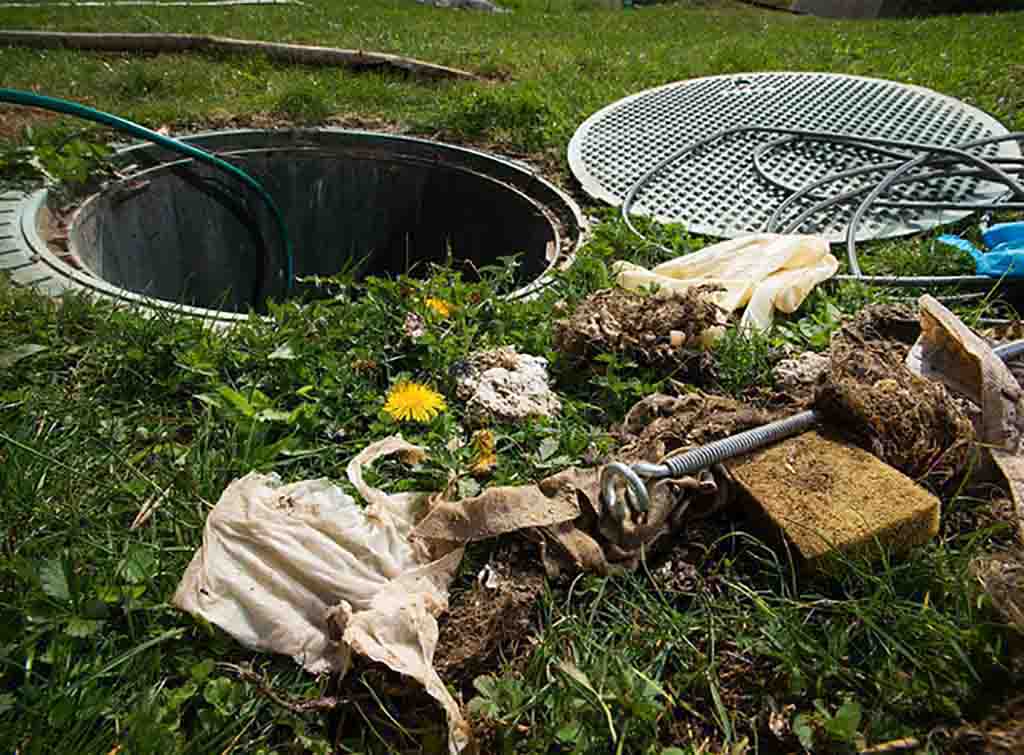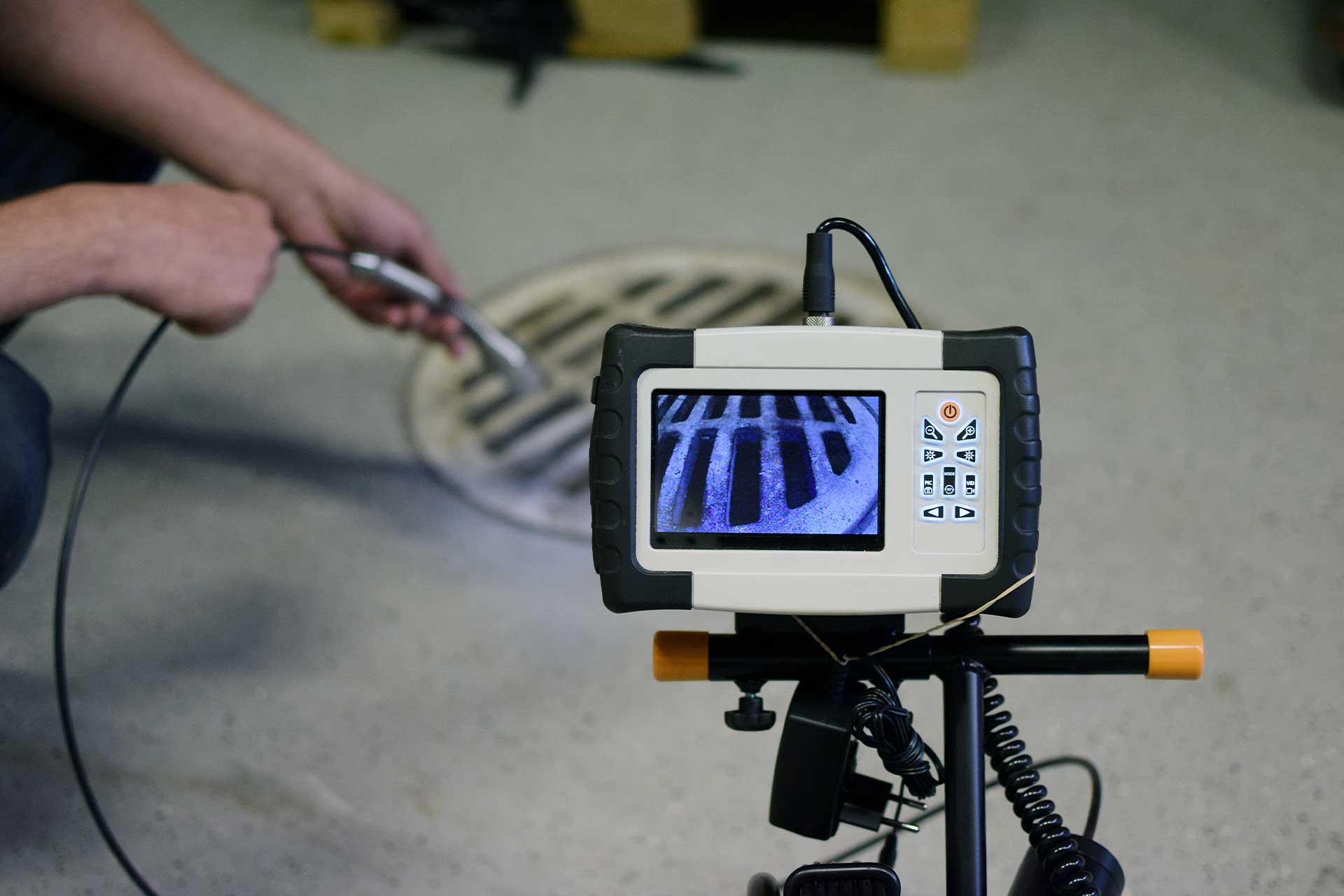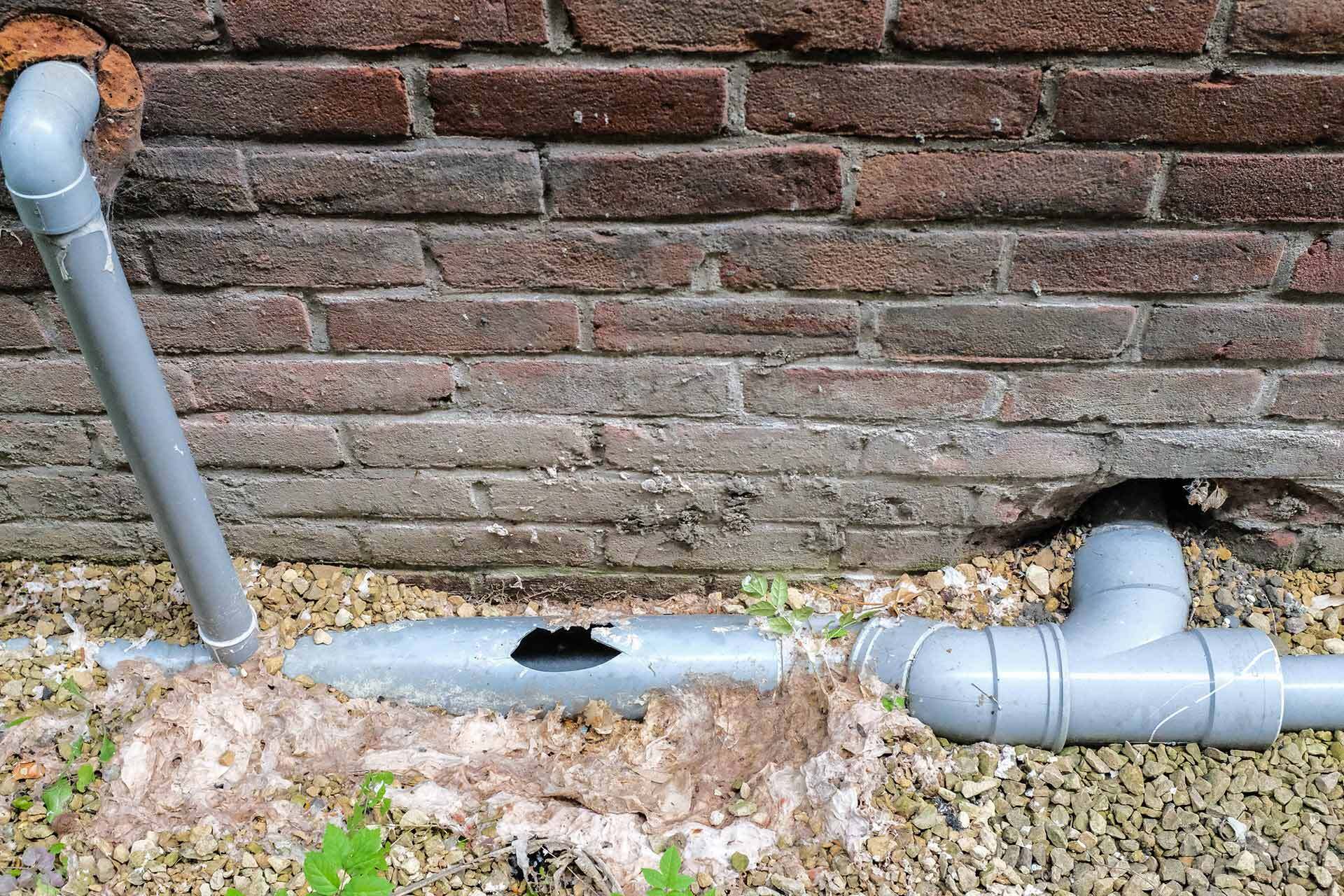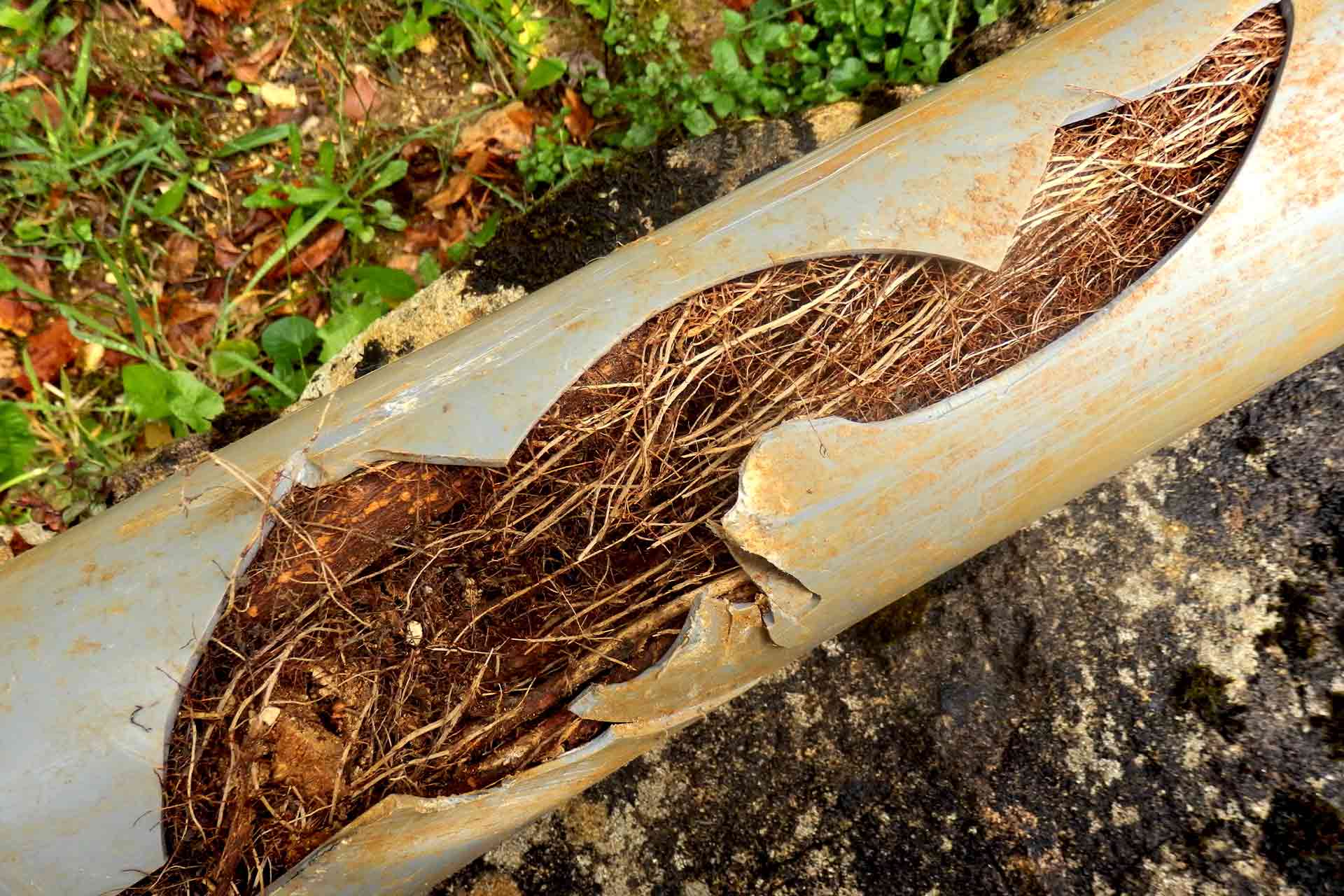Blog>Expert Advice>Blocked sewer drain - who is responsible?
Last updated: 4 November 2024
Blocked sewer drain - who is responsible?
One of the most unpleasant issues that can happen in a home is having a blocked drain. Especially if it's not always clear who is responsible for the repairs.

Knowing who should address a blockage - whether it's the homeowner, landlord, water company, or local council - can help to save time, money, and complications.
In this post, we outline:
Who is responsible for blocked sewer drains
What you need to know about shared drainage
Who is responsible for drain covers
The average cost of professional drain and sewer clearance
See the tradespeople we've checked and recommend for your job
Blocked sewer drains - who is responsible?
When faced with a sewage drain that's blocked, you'll want to figure out who is responsible for repairs as soon as possible.
After all, if your outside drain is blocked, the last thing you want is for its contents to start backing up into your home.
So let's get to it - who is responsible for a blocked sewer drain?
Responsibility is going to hinge on two factors: the location of the drain and the type of drain in question. Here's what you need to know:
Drains on your property
Homeowners are liable for drains that carry wastewater away from their homes and connect directly to a public sewer
If a sewage drain is blocked within the boundaries of your property, it's typically your responsibility to manage and clear it
Lateral drains and sewers
Lateral drains (those running from your property to the main sewer) and public sewers are normally the responsibility of your water or sewage company
If a blockage happens beyond the boundary of your property, contact your local water company in the first instance
If you are confused about private and public sewers and who is responsible for them, contact your local water company or council.
Need the services of an emergency drain clearance firm?
Search your postcode below to find trusted, reputable drain clearance companies fast.
See the tradespeople we've checked and recommend for your job
What you need to know about shared drains
Shared drains allow water and waste to run from your and your neighbours' homes into the public sewer. It's more likely to find this set up in built-up areas or around properties such as flats or communal buildings.
Who is responsible if a shared drain is blocked?
Generally, blocked shared drains are the responsibility of your local authority. However, there may be some exceptions to this. For example, if the shared drain is privately owned.
How do I know if my drain is shared?
Shared drains can be determined by their location and how they connect with the main sewer system. There are several ways you can get clarity on drain responsibility:
1. Drain location
If the drain is within your property boundary and serves only your home, it's likely to be a private drain
If the drain crosses into a neighbour's property or connects with their drainage system before joining the public sewer, it's considered a shared drain
2. Property documents
Check your property deeds or plans for details of drainage layouts and whether you have any shared drains with your neighbours
If you don't have your property deeds, contact the Land Registry
3. Local water company
Local water companies are responsible for most shared drains and public sewers
Contact your local water company to ask whether the drain is shared
Alternatively, book a drain survey. For more information and an estimate on prices, take a look at our CCTV drain survey cost guide.
Are you a tenant?
If you live in a flat or communal building, it's best to contact your landlord or property management company for help. They will normally have arrangements in place for maintenance and repairs.
Common causes of blocked drains
Discover the various causes of blocked drains and how to fix this common household problem.
Who is responsible for collapsed drains?
Significant structural damage to your drains could cause them to collapse or cave in. This could happen for several reasons, including regular blockages, tree roots, or very low temperatures.
Collapsed drains can require extensive repairs, especially if excavation and relining are needed to restore the pipe. So you'll want to know who's responsible for footing the bill.
Repairs usually are responsible if the drain collapses within your property boundary.
However, the good news is, that some drains are covered by home insurance.
Are your drains covered by home insurance?
Drains are often covered within your buildings insurance policy. As such, if your drain collapses due to an accident or unexpected issues, your insurance company may cover the cost of repairs.
You'll likely need to have a more comprehensive insurance cover to include emergency situations that need immediate repair, such as a burst pipe.
Either way, it's worth contacting your buildings insurance provider to check what's included in your policy and to make sure you have sufficient cover.
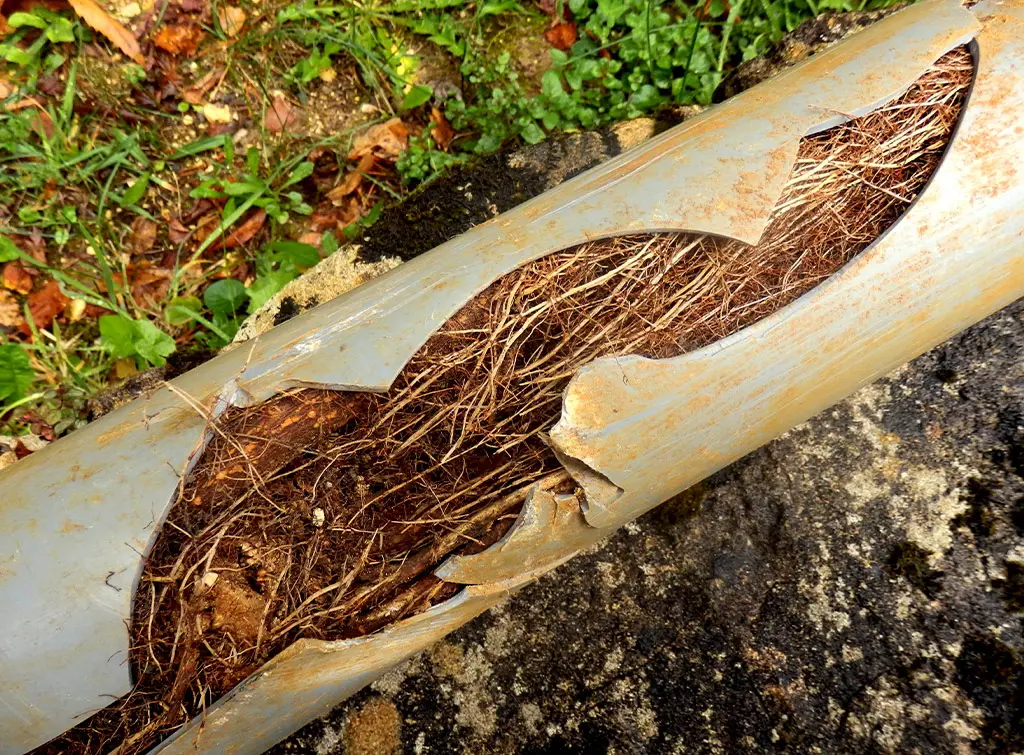
Who is responsible for drain covers?
You might also be curious to know who is responsible for the drain covers themselves. You may have heard of these referred to as manhole covers. Essentially, the removable plate that protects the underground drainage system.
If the drain cover is for a public sewer maintained by the council or local water company, repairs or replacements are not your responsibility
Drain covers belonging to a private drain on your property are up to you to maintain and repair
Tip: Look for any marking from your local water company on the drain cover to determine if it's private or public.

On Checkatrade, you'll only find trades who meet our high standards and pass up to 12 checks.
How much does professional drain unblocking cost?
For a thorough and efficient service, it's best to hire a professional drain clearance firm when faced with a blocked sewage drain.
Here are some average costs to help you plan what to expect:
Drain rodding £85
Drain jetting £185
Rodding and jetting £270
Drain CCTV survey £200
Drain relining £300 per linear metre
Average call-out fee £60
Emergency call-out fee £180
These costs should act as a guide only. Your location, the type and size of obstruction, the size of your drain, and the method of unblocking will all impact the price you are quoted.
What's the average cost of unblocking a drain?
In this drain unblocking cost guide, we outline the typical cost of unblocking a drain - including drain jetting, rodding and lining prices.
If repairs are needed, our drain repair cost guide will help you plan for what to expect.
Find a drain and sewer clearance company near you
Hopefully, you now have a clearer understanding of who is responsible for your blocked sewer drain.
Should you need the services of a drain and sewer clearance firm, we can help.
Simply add your postcode to the search box below to see who comes highly-rated in your local area. It's a quick and simple way to find trades you can trust.
See the tradespeople we've checked and recommend for your job
FAQs
Who is responsible for blocked drains
Responsibility for blocked drains depends on their location and type. Generally speaking, homeowners are liable for drains within their property boundary. The local water company is normally responsible for lateral drains and public sewers beyond the property boundary.
More Expert Advice Articles
More Blocked Drains Articles
See the tradespeople we've checked and recommend for your job

